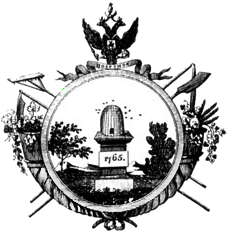| Years in Russia |
|---|
| Centuries |
| Decades |
| Years |

Events from 1765 in Russia
| Years in Russia |
|---|
| Centuries |
| Decades |
| Years |

Events from 1765 in Russia
| | This section needs expansion. You can help by adding to it. (October 2015) |
| | This section needs expansion. You can help by adding to it. (October 2015) |
| | This section needs expansion. You can help by adding to it. (October 2015) |
![]() Media related to 1765 in the Russian Empire at Wikimedia Commons
Media related to 1765 in the Russian Empire at Wikimedia Commons